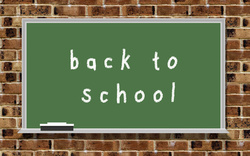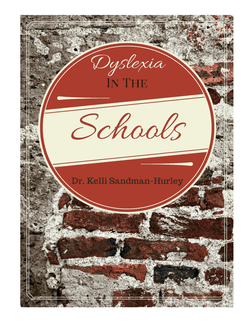
Teachers may also find this list helpful: Warning Signs That a Student in Your Class May Have Dyslexia.
Finally, this link: Things kids with dyslexia wished everyone knew, will help fight some of the misunderstandings people have about dyslexia.
 It's back to school time, which means it's time for students who struggle with dyslexia and their families to talk with this year's new teachers about dyslexia and what impact it has on the classroom. "Dear Teacher," is a letter that will help start the conversation. Teachers may also find this list helpful: Warning Signs That a Student in Your Class May Have Dyslexia. Finally, this link: Things kids with dyslexia wished everyone knew, will help fight some of the misunderstandings people have about dyslexia.
0 Comments
 Dr. Kelli Sandman-Hurley has created a FREE online resource, Dyslexia in the Schools, for any parents who wants information on how to work with the school to get help for their child with dyslexia. This free e-book is only 23 pages long but it is packed with helpful information. Click here to download your copy. Simply put, dyslexia means "difficulty with written language." It is a term used to describe people who have a greater struggle with learning to read or write. We have all heard the term dyslexia, and often are aware of famous people past and present who have publicly shared that they have this particular struggle. If this simple definition is not detailed enough for your purposes, see an official definition at Dyslexia Defined.
But beyond the definition, there is a peculiar issue with the word dyslexia when a parent thinks her child may have it, and she approaches the child's school for help. That parent discovers that the majority of schools do not use the term dyslexia, and do not test for dyslexia. Schools do recognize and use terms like "learning disability," "reading disability," or "specific learning disability." These are broader terms, but dyslexia would fall under one of these categories. There is no question that dyslexia does exist, even if the term isn't common in some schools. The National Institutes of Health (NIH) has funded over 40 years of research on the subject and continues to research the best practices for helping affected individuals learn to read. The International Dyslexia Association reports that research shows that "as many as 15-20% of the population as a whole, have some degree of dyslexia." So, in these blogs, I freely interchange the words such as "dyslexia," and "reading disability." While there are other learning disabilities, when I use this term, I am referring to dyslexia, or what some might call a reading disability, unless otherwise noted. If you prefer one or the other, feel free to think in those terms when the words are used. If a child has not been diagnosed, I will use the terms "suspected (dyslexia or reading) disability", or just plain, "struggling reader." |
AuthorHello, I'm Janet Menosky Smith. I am a Reading Specialist and Orton-Gillingham trained tutor, helping students with reading difficulties. This blog is dedicated to providing information, resources and encouragement to families and others seeking to help struggling readers. Archives
March 2018
Categories
All
|
